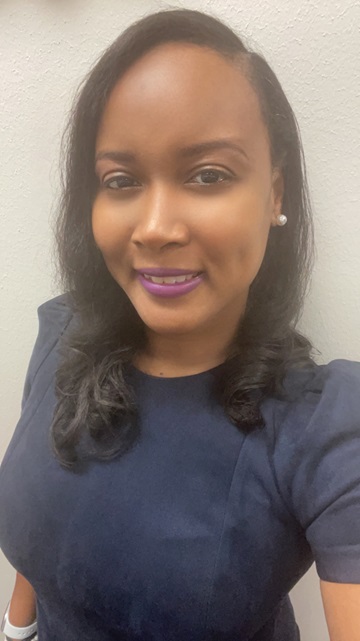
ILA Member Tihesha Morgan Porter
Principal, McMullan Elementary School
Channelview, Texas
How did you begin your career, and what led you to your current position?
I started my career as an elementary classroom teacher. Throughout my experience, I learned so much about guided reading and balanced literacy. My love for literacy led me to become an interventionist and, in that role, I was fascinated to learn more about students who struggled with reading. Eventually, after a few more years as an interventionist and educator, I had the opportunity to become a reading coach and dyslexia specialist. I truly loved working with students and helping them grow and have a desire to learn. Due to my leadership skills and literacy support, I wanted to have a bigger impact on my campus, so I became the assistant principal which then led to my current position as principal.
What is the biggest challenge in your current role?
The biggest challenge in my current role is having the desire to be more of a change agent but being restricted due to politics. It is great to have passion and teach children the way that they deserve to be taught.
What are you reading (personal or professional)?
Personally, I am going back to an oldie but goodie, The 7 Habits of Highly Effective People by Stephen R. Covey. Professionally, I am currently reading PLC+: A Playbook for Instructional Leaders by Nancy Frey, Dave Nagel, Douglas Fisher, Toni Osborn Faddis, and Aida Allen-Rotell.
How long have you been a member of ILA, and how has membership influenced your career?
I have been a member consistently since 2019, but even longer than that, I started being a member back in 2012. Reading the magazine and being aware and “in the know” about important literacy changes helped me tremendously when I was the reading coach and interventionist. It helped me to learn about different professional books that helped me to grow as a literacy leader. Reading many of the articles helped me to better understand others’ experiences and apply that experience with my own students.
What do you consider to be your proudest career moment?
The proudest career moment was hearing students call me the shoe lady. Let me elaborate: As a reading coach, I would model lessons for the teachers. One lesson I loved to teach was choosing just the right book. I would read a book to the class, Shoes for Me! by Sue Fliess, and I would bring a few different types of shoes and different sizes to demonstrate how to choose the correct book. Having real-life examples helped the students better understand how to choose the book that fits them perfectly. The kids loved it and for years I was known as the shoe lady. I do this for them!
What do you like to do when you’re not wearing your educator hat?
When I am not wearing my educator’s hat, I like to travel, binge-watch a few shows, volunteer in the Houston area with the Epsilon Phi Chapter of Iota Phi Lambda, Inc., and spend time with my family and friends.
What is a little-known fact about yourself?
I learned how to read at 4 years old. My mom wanted to ensure that when I went to school, I was prepared.
What do you believe is the biggest challenge in literacy education today?
The biggest challenge is finding ways to merge literacy with technology. Finding ways to still make it interesting and meaningful so that the students get the immediate response of touching a button, but they are also able to practice their reading and writing skills. Many teachers have students play educational games using devices but struggle with understanding how to use technology to help teach the lessons.
What advice would you give a new teacher that either you received or wish you had?
Don’t be afraid to ask questions, and just because you are a new educator does not mean that you don’t have valuable input.
When did you know you wanted to become a teacher?
The first time was when I used to play school with my dolls and stuffed animals as a child and then again when I was in college and had the opportunity to volunteer and support middle school students with their reading skills.
What can literacy educators do to motivate kids to want to read?
Literacy educators need to start by first understanding who they are as a literacy advocate and their literacy style. That will help determine in which ways they would like to help motivate students. Students love excitement! Find books that can capture their attention and read to the students with passion and enthusiasm. Find ways to do schoolwide events. For example, a read-a-thon, a book character parade, writing pumpkin stories, book fairs, book challenges and incentives, etc. The sky is the limit!